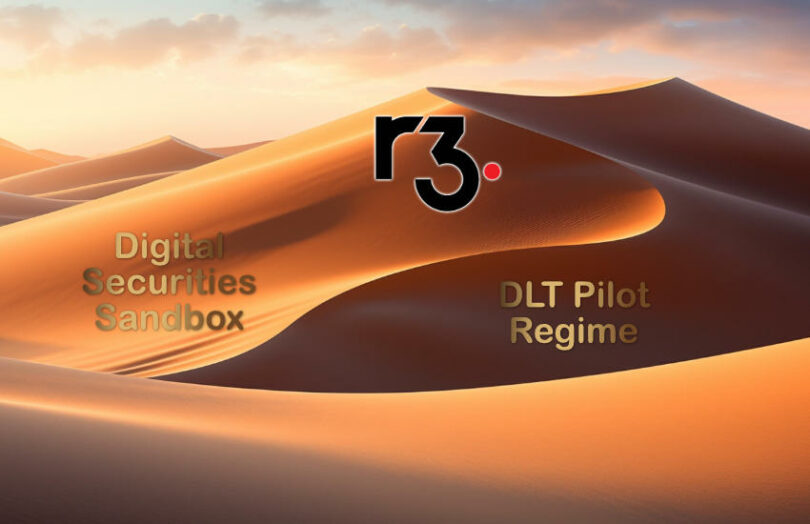Alisa DiCaprio, Chief Economist at R3, explores how regulatory sandboxes and networks can drive the growth of institutional DeFi and tokenization
The primary missing piece in DeFi is what it’s sought to avoid: regulation. But over the past 12 months, the UK and EU have made several significant steps towards creating an innovative and enduring digital economy by building out the digital assets regulatory regime.
In March, the European Union launched its DLT pilot regime, and in June the UK passed the Financial Services and Markets Act (FSMA), creating a Financial Market Infrastructure (FMI) sandbox. More recently, in October, the Financial Conduct Authority in the UK introduced plans for a fund tokenization blueprint that was released later.
As we go into 2024, what other developments should we expect?
UK Digital Securities Sandbox
Despite a dip in fintech investment and uncertain macroeconomic conditions, the UK has continued to make strides in financial services innovation. The economy has maintained a competitive edge in the sector, showcasing its ongoing commitment to advancing financial technologies through several progressive initiatives.
In June, the Financial Services and Markets Act (FSMA) was passed into legislation, a significant milestone in accelerating financial markets innovation in the UK. Part of the Edinburgh reforms package, the act put distributed ledger technology (DLT) front and centre in its mission to enable enduring financial services innovation.
Provisions set forth by this reform, such as the creation of a Financial Market Infrastructure (FMI) digital securities sandbox, bring DLT into a secure, regulated environment. For entities in highly regulated markets, the FSMA FMI sandbox provision is key. The FMI sandbox will allow firms to experiment with DLT within a regulated framework by temporarily changing specific legislation.
The FMI sandbox will serve as a stepping stone to a more collaborative, open, and trusted digital economy. Because of this, it has frequently been compared to the European Union’s DLT pilot regime. Though both have the ultimate goal of determining whether DLT-based market infrastructure will be successful permanently, there are a few key differences between them.
EU DLT Pilot Regime
The EU’s DLT pilot, which went live in March 2023, is similar to the UK’s FMI sandbox in that it also offers firms a slight reprieve from legislation to explore the use of DLT and blockchain. However, there are several factors which differentiate the EU’s pilot from the FMI sandbox.
To begin, the FSMA enables far broader participation in the FMI sandbox than the DLT pilot regime allows. While UK sandbox participants can include both FMI providers and participants as well as technology companies, the EU’s pilot only allows multilateral trading facilities and securities settlement systems.
The use cases for each concept also differ significantly. The EU pilot offers an exemption to the MiFID II and CSDR regulations as it enables firms to test and experiment with DLT, but the FMI sandbox allows for the dis-application of a much wider range of legislation. The FMI sandbox not only exempts firms from current legislation, but it also goes one step further by allowing for the modification of legislation in certain scenarios. Because of this, the FMI sandbox may result in a more targeted regulatory framework for various use cases.
The technology itself differs as well. While much of the focus has been on the use of DLT, it is not the only developing technology that could be tested or adopted under the sandbox. Meanwhile, the EU pilot sets out frameworks specifically for DLT multilateral trading facilities and settlement systems.
New frameworks, and better collaboration
The FSMA represents a significant shift in the UK’s financial regulatory framework and a massive step forward for the transformative potential of DLT-based systems across all financial markets. The implementation of the FSMA proposal will require substantial collaboration across the public and private sectors, as regulators and governments work with technology providers to deliver.
Already at the forefront of innovation in the digital assets space, the UK is pushing ahead hard to not just evolve the technology for various use cases but to ensure the correct frameworks to support those who adopt are in place as well.
In October, the UK’s Financial Conduct Authority (FCA) announced its plans for a fund tokenization blueprint, that was released in late 2023. The blueprint is an important step in setting out how fund managers can innovate with tokenization successfully and securely, as well as maintain a level of standardisation, and potential for collaboration, into the equation.
What’s next?
Over the next five years, DLT is predicted to help tokenize an estimated $5 trillion in assets. There are already several real-world examples of tokenization’s ability to democratise financial market access, enhance collateral mobility, and streamline costs. For example, HSBC recently tokenized ownership of the physical gold in its London vault, and Euroclear settled its first digital bond using its new Digital Financial Market Infrastructure (D-FMI).
However, whether these first few positive indications will continue and grow into real, large-scale change is heavily dependent on whether the right regulations and networks are in place to enable adoption. The EU Commission recently identified the sector’s lack of interoperability as one of the “most significant obstacles” to enabling a thriving digital economy. As the technology evolves, custody and control frameworks are vital, as is prioritising interoperability across the different regions and players driving those evolutions.
An encouraging step in the right direction, the FCA recently announced a partnership with the Monetary Authority of Singapore (MAS), the Financial Services Agency of Japan (FSA), and the Swiss Financial Market Supervisory Authority (FINMA) on digital asset innovation.
Through continued dedication to smart frameworks and consistent collaboration, we can leverage tokenization to reach the ultimate end goal for the market – participants controlling their assets securely, seamlessly, and in a streamlined way across different networks.






